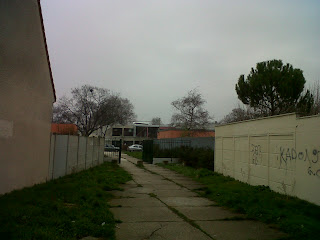Zygmunt Bauman writes a fascinating book which anyone working on narratives of misfortune must read.What is excess, and how do human beings cope with it? Does postmodernism create consumer cultures where waste becomes the icon of the perpetually indestructible? How do we treat those who handle waste? And are they themselves treated as redundant and obsolete? As stratification theory, Bauman's work draws us to the significance of reading and telling stories. Stories are selective in themselves, highlighting one aspect rather than another.
"Asked how he obtained the beautiful harmony of his sculptures, Michaelangelo reputedly answered:"Simple. You just take a slab of marble and cut out all the superfluous bits." In the heyday of the Renaissance, Michelangelo proclaimed the precept that was to guide modern creation. Separation and destruction of waste was to be the trade secret of modern creation:through cutting out and throwing away the superfluous, the needless and the useless, the beautiful, the harmonious, the pleasing and the gratifying was to be divined." (pg 21) Bauman refers to the opposition that Lewis Mumford makes, of creating the new: Agriculture and Mining.Farming creates, recreates, reduplicates, multiplies, a legacy which looks at birth and renewal. "Mining on the other hand is an epitome of rupture and discontinuity. The new cannot be born unless something is discarded, thrown away or destroyed. The new is created in the course of meticulous and merciless dissociation between the target product and everything else that stands in the way of its arrival." (21)
Glass cities and nuclear energy, however, stand apart from both.
"Asked how he obtained the beautiful harmony of his sculptures, Michaelangelo reputedly answered:"Simple. You just take a slab of marble and cut out all the superfluous bits." In the heyday of the Renaissance, Michelangelo proclaimed the precept that was to guide modern creation. Separation and destruction of waste was to be the trade secret of modern creation:through cutting out and throwing away the superfluous, the needless and the useless, the beautiful, the harmonious, the pleasing and the gratifying was to be divined." (pg 21) Bauman refers to the opposition that Lewis Mumford makes, of creating the new: Agriculture and Mining.Farming creates, recreates, reduplicates, multiplies, a legacy which looks at birth and renewal. "Mining on the other hand is an epitome of rupture and discontinuity. The new cannot be born unless something is discarded, thrown away or destroyed. The new is created in the course of meticulous and merciless dissociation between the target product and everything else that stands in the way of its arrival." (21)
Glass cities and nuclear energy, however, stand apart from both.

































































































